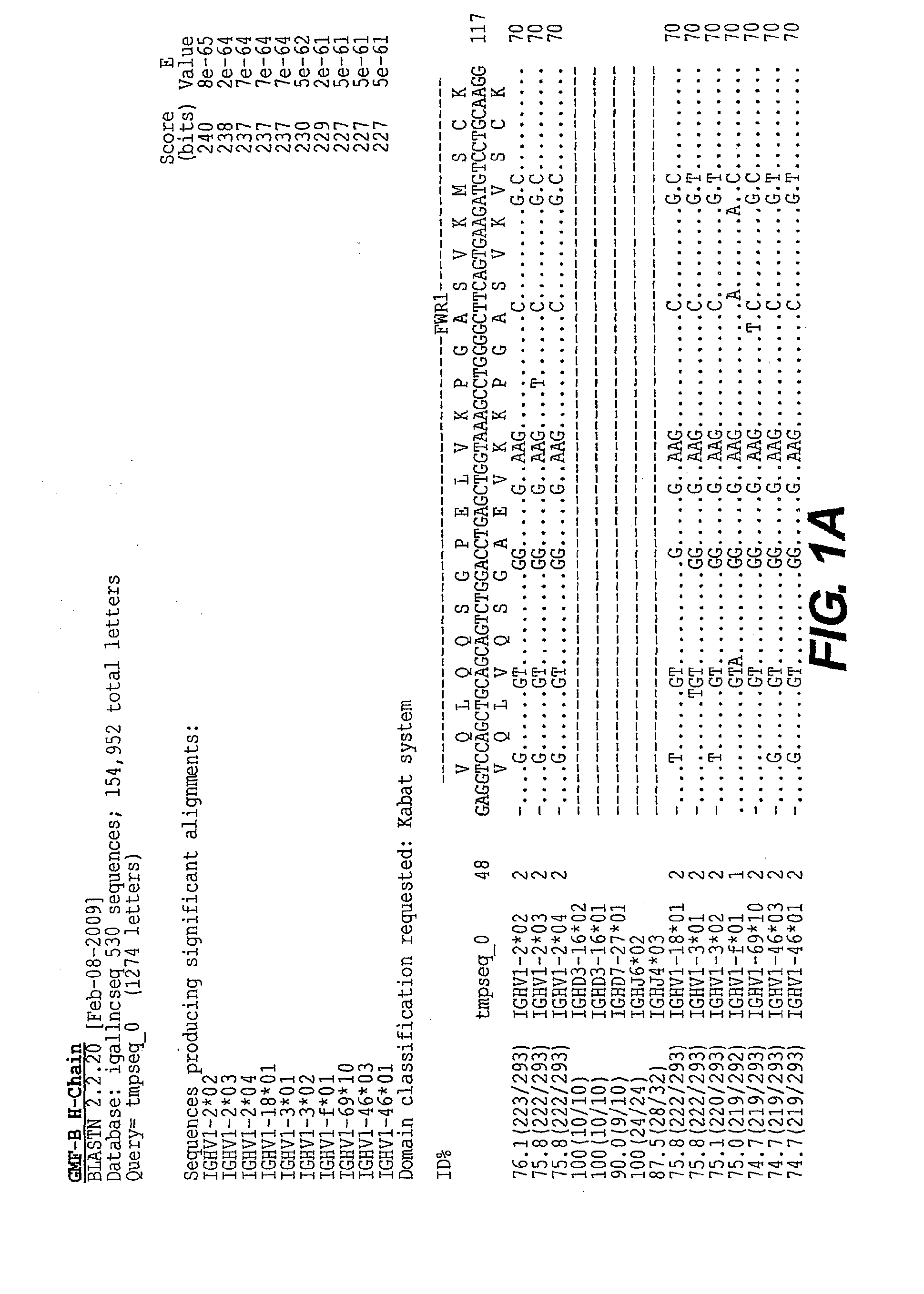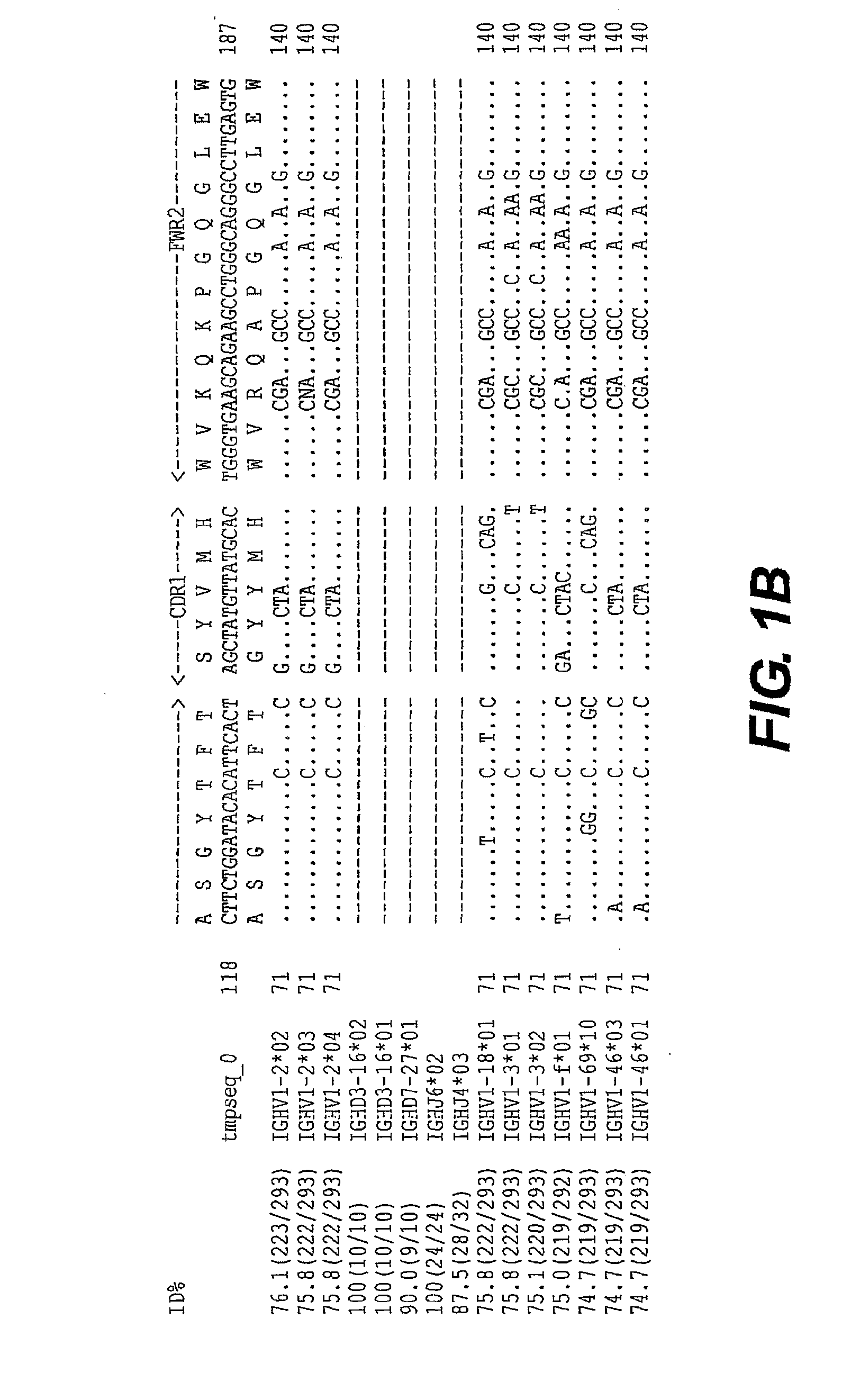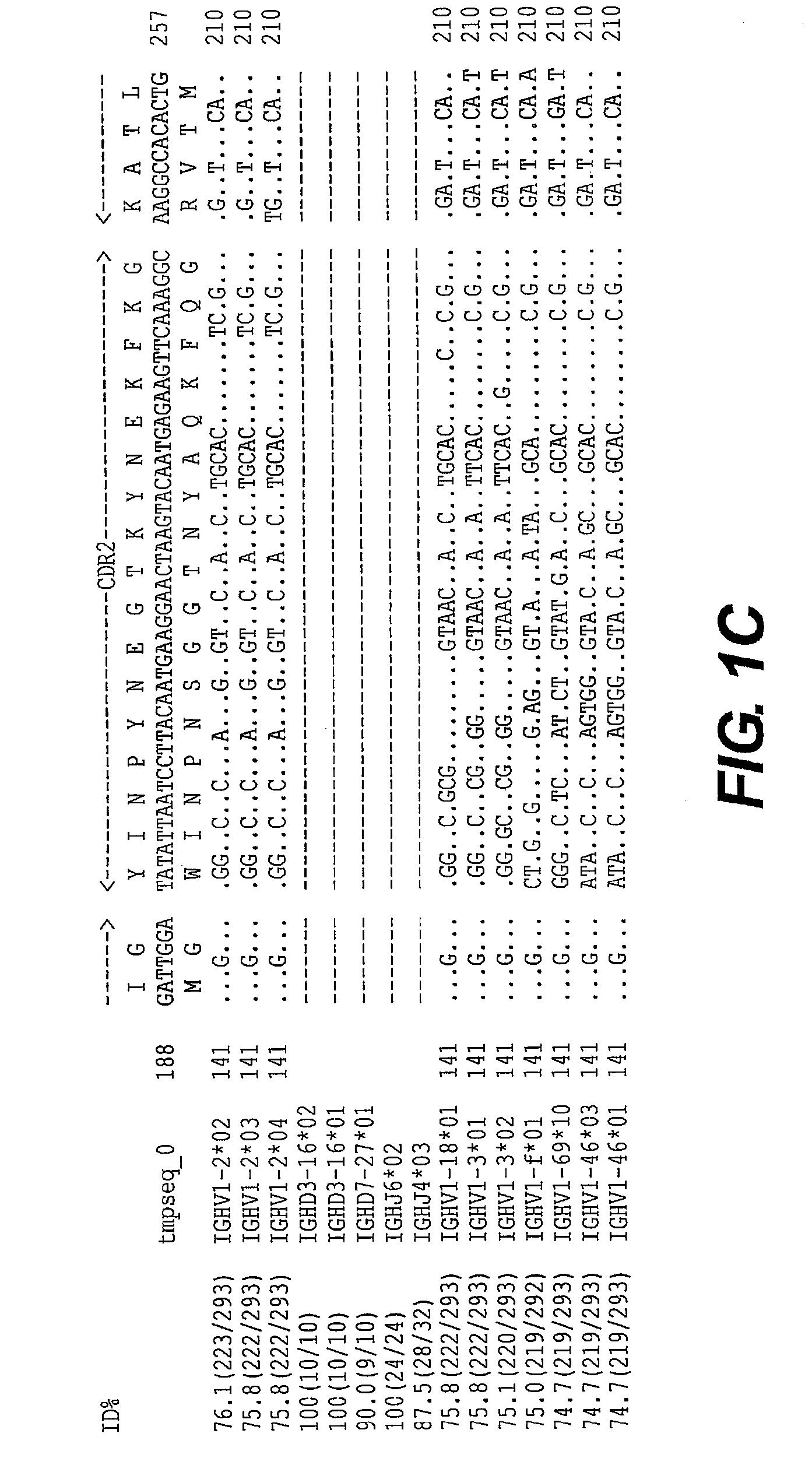Diagnosis and prognosis of triple negative breast and ovarian cancer
a triple negative, breast and ovarian cancer technology, applied in the field of diagnosis and prognosis of triple negative breast and ovarian cancer, can solve the problems of low prognosis, low treatment efficiency, and inability to effectively target specific targeted therapies, and achieve the effect of improving the prognosis of untreated or treated breast cancer
- Summary
- Abstract
- Description
- Claims
- Application Information
AI Technical Summary
Benefits of technology
Problems solved by technology
Method used
Image
Examples
example 1
Breast Cancer Patients have Higher sGMF-B Levels than Control Groups
[0132]Plasma samples are obtained from control and breast cancer patient groups and are diluted with PBS at a ratio of 1:100. Plasma sGMF-B levels are measured with an enzyme-linked immunosorbent enzyme assay. The polysorp ELISA plates (Nalgene NUNC® International, Rochester, N.Y.) are coated with 100 μL / well of diluted plasma and incubated at 4° C. overnight. The blood plasma samples are analyzed in a blinded fashion. Wells are washed with PBS and incubated at room temperature for one hour with blocking buffer (5% BSA in PBS). After washing with PBS, the primary antibody, anti-sGMF-B mAb (clone name: Alper-GMF-B) is added in dilution buffer (45 μg / ml) (PBS buffer, 1% BSA, 0.01% Tween-20). The wells are washed with PBS / 0.03% Tween-20 and incubated at room temperature for one hour with 100 μL / well secondary antibody (HRP-Donkey anti-mouse IgG, Jackson ImmunoResearch, West Grove, Pa.) diluted 1:3000. After washing the...
example 2
GMF-B Expression is Indicative of a Bad Overall Prognosis
[0133]A 700 breast cancer patient cohort is used for staining. Microtome sections are deparaffinized and incubated with Anti-sGMF-B mAb (clone name: Alper-GMFB) following general immunohistochemistry (IHC) procedures. Diagnostic staining is performed via standard pathological procedures using Her2, estrogen receptor, and progesterone receptor antibodies. Results show that the presence of glia maturation factor beta (GMFB) protein expression is indicative for bad prognosis and lymph node metastasis in triple negative (ER, PR and HER2) primary (mostly stage IIb) breast cancer tissues. Stage IIb is designated when the tumor is either larger than 2 centimeter but not larger than 5 centimeters and has spread to the auxiliary lymph nodes, or larger than 5 centimeters but has not spread to the auxiliary lymph nodes. Absence of GMFB expression is indicative of good prognosis and no lymph node metastasis in triple negative primary brea...
example 3
GMFB Expression is Significantly Associated with Increased Survival of ER or PR Negative Breast Cancer Patients
[0141]A total of 714 breast tumor and control samples are obtained from Yale School of Medicine, Department of Pathology, Tissue Microarray and Archiving, YTMA. Of these samples, 630 are from female breast cancer patients. These are samples utilized for assessment of GMF-B expression using anti-GMFB mAb (clone name: Alper-GMF-B). Available patient characteristics are examined for any association with overall survival time using the long rank test. Overall survival was measured as the number of months from diagnosis to death or last contact. Patients without dates of death were censored on their date of last contact. Nuclear grade was omitted from multivariable analyses due to the number of samples missing this information. Kaplan-Meier plots present the estimated survival for different groups.
[0142]FIG. 4 presents the overall survival curve based on GMF-B status, where 2+ a...
PUM
 Login to View More
Login to View More Abstract
Description
Claims
Application Information
 Login to View More
Login to View More - R&D
- Intellectual Property
- Life Sciences
- Materials
- Tech Scout
- Unparalleled Data Quality
- Higher Quality Content
- 60% Fewer Hallucinations
Browse by: Latest US Patents, China's latest patents, Technical Efficacy Thesaurus, Application Domain, Technology Topic, Popular Technical Reports.
© 2025 PatSnap. All rights reserved.Legal|Privacy policy|Modern Slavery Act Transparency Statement|Sitemap|About US| Contact US: help@patsnap.com



